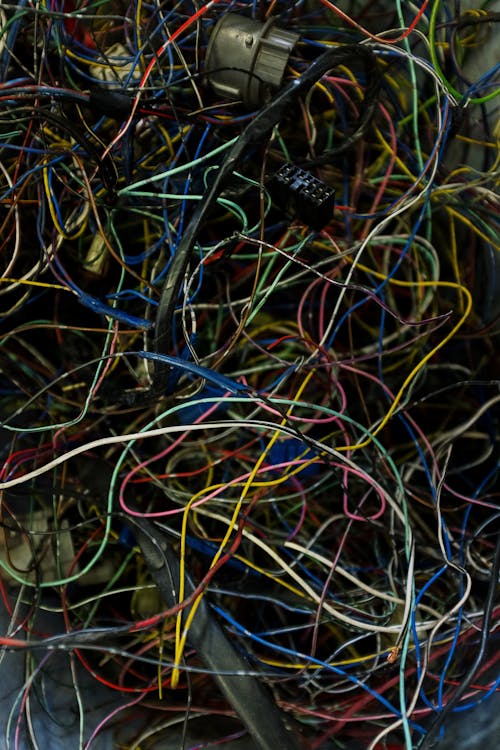Electrical wiring plays a crucial role in powering our homes, providing the infrastructure for lighting, appliances, electronics, and more. In recent years, advancements in technology and materials have revolutionized the way we approach electrical wiring, offering safer, more efficient, and smarter solutions for modern homes.

- Smart Home Integration:
- Smart home technology has transformed the way we interact with our living spaces, and electrical wiring is no exception. Modern electrical systems can now be seamlessly integrated with smart home platforms, allowing homeowners to control lighting, appliances, security systems, and more from their smartphones or voice-activated assistants.
- Smart switches and outlets enable remote operation and scheduling of devices, while sensors and detectors provide real-time monitoring and alerts for safety hazards such as smoke, carbon monoxide, and water leaks.
- Additionally, smart meters and energy monitoring systems allow homeowners to track and optimize their energy usage, leading to potential cost savings and reduced environmental impact.
- Energy-Efficient Wiring Materials:
- Energy efficiency is a top priority for homeowners seeking to reduce their utility bills and minimize their carbon footprint. Innovations in electrical wiring materials have led to the development of more energy-efficient options that help optimize power distribution and minimize energy loss.
- For example, copper wiring remains a popular choice due to its conductivity and durability, but advancements in insulation materials and conductor coatings have improved its efficiency and longevity.
- Additionally, aluminum wiring, once notorious for its fire risk and reliability issues, has undergone significant improvements in recent years, making it a viable and cost-effective alternative for certain applications.
- Wireless Communication Networks:
- Wireless communication technologies have revolutionized how devices connect and communicate, eliminating the need for physical wiring in some cases. In modern homes, wireless electrical systems enable seamless integration of devices and appliances without the constraints of traditional wiring.
- Wireless lighting systems, for example, utilize radio frequency (RF) or Wi-Fi connectivity to control individual light fixtures or entire lighting zones remotely. This flexibility allows for easy installation and customization without the need for extensive rewiring.
- Furthermore, wireless sensors and actuators enable home automation features such as occupancy sensing, temperature control, and security monitoring, enhancing convenience, comfort, and energy efficiency.
- Safety Enhancements and Monitoring Systems:
- Safety is paramount when it comes to electrical wiring, and innovations in technology have led to significant advancements in safety features and monitoring systems for modern homes.
- Ground fault circuit interrupters (GFCIs) and arc fault circuit interrupters (AFCIs) provide enhanced protection against electrical shocks and fires by quickly detecting and disconnecting faulty circuits.
- Additionally, advanced circuit breakers and surge protectors offer improved overload protection and voltage regulation, safeguarding sensitive electronic devices from damage caused by power surges or fluctuations.
- Integrated monitoring systems and diagnostic tools allow homeowners to remotely monitor their electrical systems, identify potential issues, and receive alerts in real time, enabling proactive maintenance and troubleshooting.
- Modular Wiring Solutions:
- Modular wiring systems offer a flexible and scalable alternative to traditional wiring methods, allowing for easier installation, reconfiguration, and expansion of electrical circuits in residential and commercial buildings.
- These pre-manufactured wiring assemblies consist of plug-and-play components that can be quickly and easily connected without the need for specialized tools or expertise. This simplifies the installation process and reduces labor costs, making modular wiring an attractive option for new construction and renovation projects.
- Additionally, modular wiring systems promote sustainability by minimizing waste and reducing material usage compared to traditional wiring methods, making them an environmentally friendly choice for modern homes.
- Voice-Activated Controls and Voice-Assistant Integration:
-
- Voice-activated controls and integration with popular voice assistants such as Amazon Alexa, Google Assistant, and Apple Siri are transforming the way we interact with our homes. Modern electrical wiring systems can be seamlessly integrated with voice-controlled devices, allowing homeowners to control lighting, temperature, security systems, and other smart home devices using simple voice commands.
- This hands-free control not only enhances convenience but also promotes accessibility for individuals with mobility impairments or disabilities. By incorporating voice-activated controls into their electrical wiring systems, homeowners can create more inclusive and user-friendly living environments.
- Fire-Resistant Wiring Materials:
-
- Fire safety is a critical concern in residential construction, and innovations in electrical wiring materials have led to the development of fire-resistant options that help mitigate the risk of electrical fires. Fire-resistant wiring materials incorporate special coatings, insulation, or additives that provide enhanced protection against heat and flames, reducing the spread of fires and minimizing property damage.
- These materials are especially valuable in high-risk areas such as kitchens, attics, and crawl spaces, where electrical wiring may be exposed to heat sources or insulation materials. By incorporating fire-resistant wiring materials into their homes, homeowners can enhance safety and peace of mind for themselves and their families.
- Remote Monitoring and Maintenance Services:
-
- Remote monitoring and maintenance services leverage the power of the Internet of Things (IoT) to provide homeowners with real-time insights into their electrical systems’ performance and health. Advanced sensors and monitoring devices can track energy usage, detect abnormalities, and alert homeowners to potential issues such as overloaded circuits, voltage fluctuations, or equipment failures.
- Additionally, remote maintenance services enable electricians or service providers to diagnose problems remotely, perform software updates, or schedule preventive maintenance visits without the need for on-site appointments. This proactive approach to electrical system management helps homeowners avoid costly repairs, reduce downtime, and optimize energy efficiency over time.
Conclusion:
Innovations in electrical wiring have transformed the way we power and control our homes, offering safer, more efficient, and smarter solutions for modern living. From smart home integration and energy-efficient materials to wireless communication networks and modular wiring systems, homeowners have access to a wide range of options to enhance the functionality, comfort, and safety of their living spaces. By embracing these innovations, homeowners can create homes that are not only more convenient and energy-efficient but also safer and more environmentally sustainable for generations to come.
